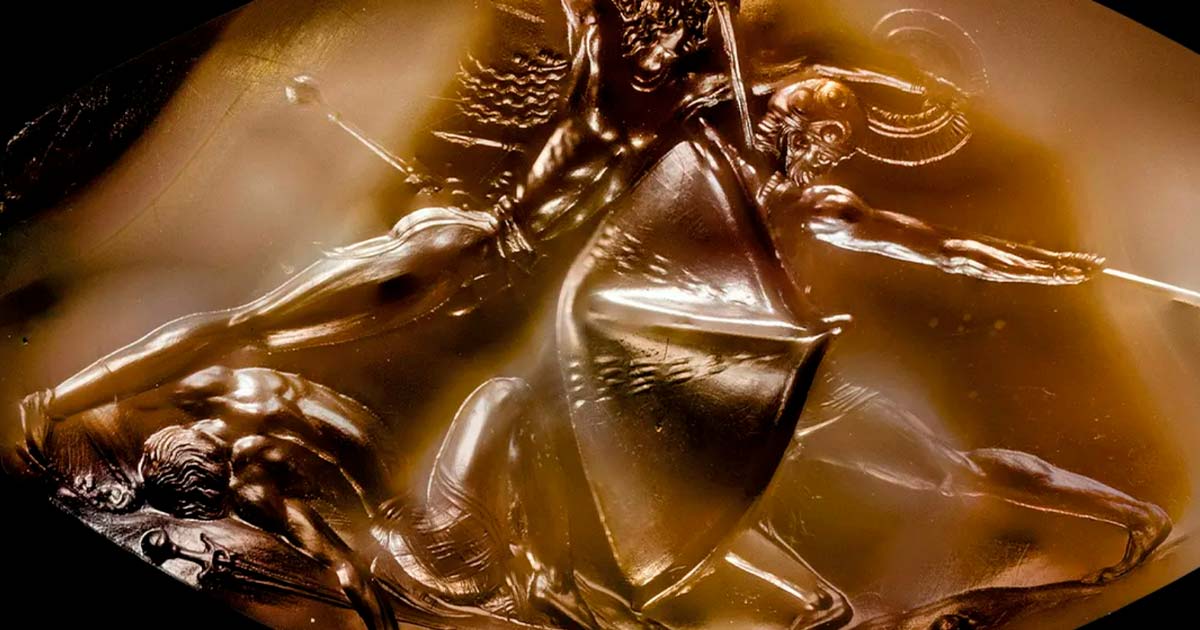Was The Griffin Warrior’s Treasure Looted from Other Cultures? (Video)
Approximately three and a half thousand years ago, a man was interred on a Greek hillside near Pylos, surrounded by an astonishing array of riches. What's intriguing is that many of these treasures appear to have been appropriated from a more culturally advanced civilization predating his own. Could it be that the Griffin Warrior was associated with a war party that pillaged the Minoan stronghold of Crete, ultimately leaving the island in disarray? Experts now hypothesize that the Griffin Warrior's own people, the Mycenaean Greeks, descended upon Crete with intentions of invading this once-thriving land. His grave goods suggest they ransacked whatever they fancied and laid waste to everything else.
One of the most captivating artifacts interred with the warrior is a minutely carved stone, an inch in length, used for stamping a personal imprint into clay—a seal. Its exquisite craftsmanship unmistakably reflects Minoan origins. Closer examination of the stone unveils a striking resemblance between the warrior depicted and the remains of the Griffin Warrior himself, including the distinctive long, curly locks. Ivory combs and a bronze mirror found in the grave may provide circumstantial evidence linking the warrior with the well-groomed hero in the carving.
- Bringing a Bronze Age Face to Light: Face of the Greek Griffin Warrior
- Gold Lined Tombs Unearthed Beside Griffin Warrior
Top image: Griffin warrior carved stone. Credit: J. Vanderpool, Department of Classics, University of Cincinnati.

















